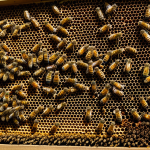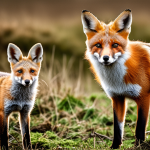Understanding the Importance of Indoor Exercise for Cats
Cats are natural athletes, and indoor cat exercise is crucial for their overall well-being. Engaging in physical activity provides numerous feline health benefits. It helps maintain healthy weight, promotes cardiovascular fitness, and stimulates muscle growth. These are all essential for avoiding obesity and related health issues.
Besides the physical benefits, exercise holds psychological significance for indoor cats. Playtime activities relieve stress, reduce anxiety, and prevent behavioural problems. A well-stimulated cat is less likely to engage in destructive behaviours and will generally exhibit a more positive temperament.
Also to discover : Comprehensive Cat Care: Pro Tips to Protect Your Folded-Ear Felines from Persistent Ear Infections
Inactivity can have adverse consequences for felines. Without regular exercise, cats risk developing health issues, including obesity and diabetes. They may also experience a decline in mental sharpness and become prone to depression-like symptoms.
Therefore, it’s crucial to promote cat fitness by incorporating regular exercise into your pet’s daily routine. With the absence of the natural stimuli an outdoor environment provides, finding ways to keep your indoor cat active is critically important. Incorporating interactive play and enrichment activities can help prevent the negative effects of inactivity and support a healthier, happier feline.
Also read : Crafting the Perfect Diet for Your Hyperthyroid Cat: Top Tips for Weight Control and Energy Enhancement
Creative Indoor Exercise Ideas
Engaging in a variety of indoor cat activities is essential for maintaining a healthy lifestyle for your feline friend. These activities promote both physical fitness and mental stimulation, ensuring a balanced playtime experience.
Interactive Toy Recommendations
To optimize cat playtime, incorporate toys that encourage both physical and mental engagement. Popular choices include laser pointers, feather wands, and puzzle feeders. These toys mimic prey, stimulating the cat’s natural hunting instincts. Select toys that are safe; avoid those with small detachable parts that pose choking hazards.
DIY Exercise Spaces
Creating homemade exercise spaces can be simple and inexpensive. Use household items like boxes or blankets to craft obstacle courses. Consider building climbing structures with sturdy materials to encourage vertical movement. Designing spaces that incorporate these elements fosters an environment conducive to active exploration.
Active Playtime Activities
Structured cat playtime activities ensure consistent exercise. Engage your cat with games like fetch or chase, adapting the pace and style to suit your pet’s preference. Establish regular play sessions to reinforce routine and use treats as motivation. Strategically placing interactive elements throughout your home will further inspire movement and curiosity.
Experiment with different approaches to find what entertains your cat the most, contributing to their overall well-being.
Creating a Stimulating Indoor Environment
Enhancing your cat environment enrichment is pivotal for promoting physical and mental well-being. Incorporate vertical spaces like shelves or cat trees. Cats love to climb, and these structures offer exercise opportunities, satisfying their instinctual need for heights.
Integrate varied textures and scents to provide sensory stimulation. Consider items like scratching posts, textured mats, or toys infused with catnip. These elements enhance your pet’s sensory experience, enriching their daily life. The scents and textures engage a cat’s natural curiosity, encouraging interaction.
Creating safe, enriching spaces is essential. Organise areas that foster exploration and play. Ensure that climbing spots and hideaways are secure and offer comfort to cats. Providing such environments reduces stress, boosts confidence, and leads to a more active lifestyle. Regularly rotate toys and resources to keep the cat intrigued and active.
By crafting a diverse and stimulating home, you’re directly contributing to your cat’s happiness. The combination of vertical spaces, sensory-provoking items, and secure environments promotes physical engagement and mental agility, ultimately supporting a fulfilling indoor life for your feline friend.
Tracking and Encouraging Cat Activity
Understanding your cat’s daily exercise can lead to improved cat fitness. Just as fitness trackers revolutionize human health monitoring, pet activity trackers provide insights into feline behavioral patterns and exercise levels. Devices like smart collars and motion sensors help owners gauge their cat’s activity and adjust routines to ensure balanced exercise.
Technology for Cat Owners
Pet activity trackers allow you to track your cat’s movement through features like step counting and dynamic play monitoring. Apps linked to these devices can demonstrate these patterns, providing an engaging way to encourage more active behavior. Some platforms include gamified activities, offering digital rewards when your cat hits exercise goals.
Manual Tracking Techniques
For those preferring a hands-on approach, keeping a journal of cat activities can reveal useful trends. Note durations of play and periods of rest. Review these logs to understand behavioral shifts and tailor exercise routines to your cat’s energy levels. Adjust bursts of activity, ensuring it aligns with their natural cycles.
Setting Goals for Feline Fitness
Set measurable, achievable goals that fit your cat’s unique activity needs. Monitor improvements, celebrating milestones like increased playfulness or energy. Create a system where your cat enjoys a consistent exercise routine through games and scheduled sessions. It promotes overall well-being, ensuring a happier, healthier pet.









